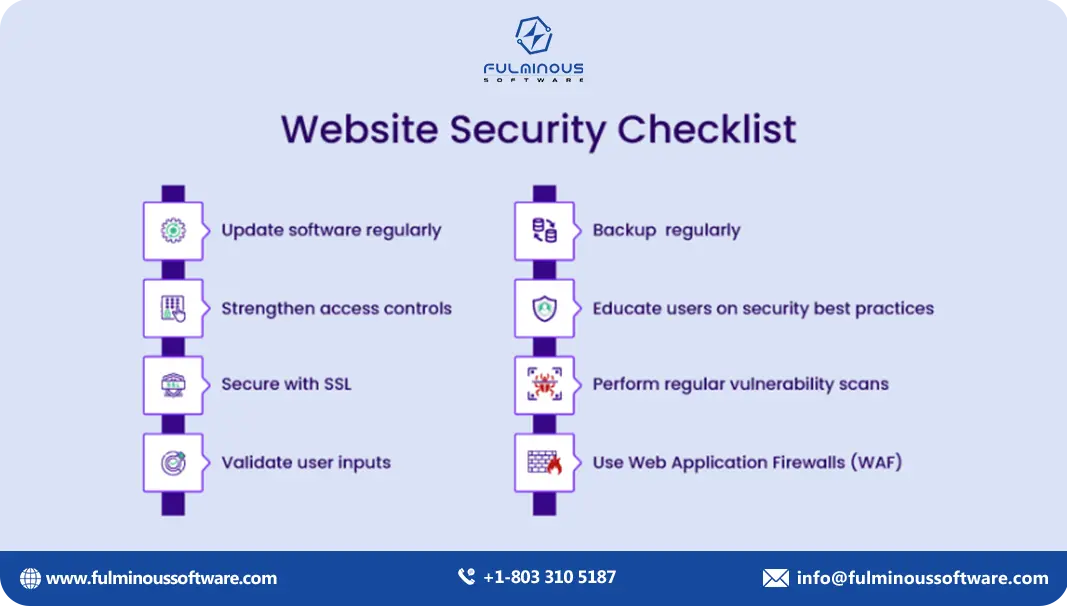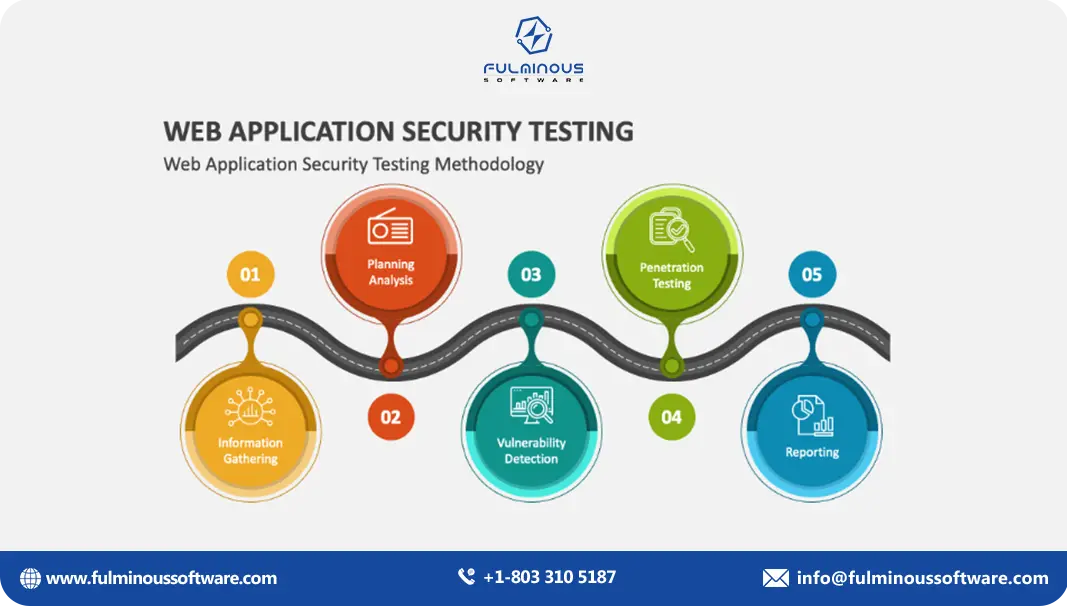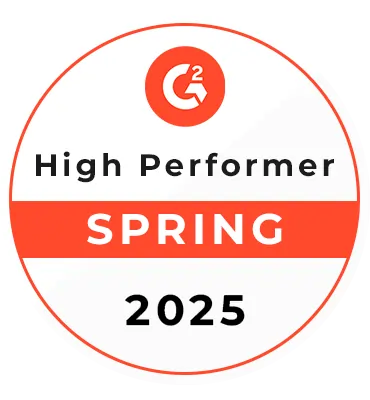Importance of Security Features in Manufacturing Website Development
Manish Kumawat
Last Updated on: 07 October 2025
A trending website with high-security features is important for any business, especially in the manufacturing sector. As manufacturers heavily depend on digital platforms like websites for operations, communication, and customer interactions, securing their online presence has never been more critical.

Understanding the Risks: Why Manufacturing Websites Need Robust Security
Imagine the following incidents:
- A big ticket client wants to search your company details and your manufacturing business website is down due to some cyber attack. They may lose confidence in your company and look for another manufacturing company.
- Your manufacturing website is attacked by cyber fraud and they stole some relevant data of your valuable clients. They may lose trust in your service and choose another company.
Is it a pleasant incident? No! No! No! Definitely No!
Such incidents may cause time loss, financial loss, trust loss, break in client relations, reduced company reputation, and many more. The following stats will prove that:
- Every day, more than 2,200 cyberattacks occura (source).
- Vulnerabilities in web applications are the focus of 17% of cyber attacks .
- In 2023, a data breach caused an average cost of $4.45 million (source).
- Businesses were able to find and stop breaches 27% faster when they used AI or IoT automation software. 51% of organizations are increasing the use of AI and IoT automation in security operations (source).
Benefits of Strong Security Features of Manufacturing Websites
As a business owner, whenever you invest, you need to think about its benefits. Before you invest your valuable money to make your websites more secure, see the following benefits of it.
1. Secure Sensitive Information
Manufacturing companies need well-secured business websites. Because, they always handle important data like proprietary designs, supplier information, and client details. Cyber frauds are always looking for a loophole to get and misuse these data. A manufacturing website with top-class security protects these data from unauthorized access and cyberattacks. Implement SSL certificates, secure authentication methods, and encryption protocols for this.
2. Avoid Downtime and Disruptions
Cyberattacks like Distributed Denial of Service (DDoS) attacks can disturb the functioning of manufacturing websites. Such attacks may lead to losing hundreds and thousands of dollars for manufacturing businesses due to downtime and disruptions. Firewalls, detection systems, and regular security audits are useful to prevent such attacks. A website that always works and is accessible to clients and partners is equal to a perfect marketing tool.
3. Boost Customer Trust
As mentioned earlier, if they think your business website is secure, customers and partners are more likely to trust you and do business with you. Whenever they share their valuable data, they always look for 100% security from your website. Showing off those security badges is like putting up a sign that says, "Hey, we care about your stuff!" It tells people you're serious about keeping their info safe.
4. Follow Regulations
Manufacturers must comply with various industry regulations and standards, such as GDPR, CCPA, and ISO 27001. These regulations guide businesses in implementing security measures to protect the data of users. Websites need to be super safe to with these regulations to avoid getting in trouble. It also shows people that the company really cares about keeping your stuff secure.
5. Protecting Intellectual Property
Manufacturing businesses see intellectual property (IP) to be a valuable asset. Stealing, illegal use, or copying of proprietary designs, techniques, and technology must be avoided by safeguarding intellectual property (IP) using strong website security measures. Implementing access limits, keeping an eye on user behavior, and utilizing encryption are a few examples of this.
6. Say Goodbye to Financial Loss
Due to ransom payments, data breaches, downtime, legal costs, and reputational harm, cyberattacks can cause large financial losses. Such financial may affect the overall financial condition of manufacturing businesses and it is important to avoid these consequences by investing in adding strong security elements for the website.
7. Overall Business Security Enhancement
In a larger cybersecurity plan, a secure website is frequently the first line of protection. Manufacturers can strengthen their company's overall security by securing the website. Because websites are treasures of valuable business information.
11 essential security features for manufacturing website

If you want to take the above-mentioned advantages, you need to consider the following security features that can be the foundation for quality assurance of your website.
- SSL/TLS Certificates: Secure Sockets Layer (SSL) and Transport Layer Security (TLS) certificates encrypt data transmitted between the user's browser and the website, ensuring that sensitive information remains private and protected from interception.
- Firewalls: Implementing both network and application firewalls helps to block unauthorized access and filter out malicious traffic, providing a barrier between trusted internal networks and untrusted external ones.
- Intrusion Detection and Prevention Systems (IDPS): These systems monitor network and system activities for malicious actions or policy violations, alerting administrators and potentially blocking suspicious activities.
- Multi-Factor Authentication (MFA): Requiring multiple forms of verification (such as a password and a mobile authentication code) adds an extra layer of security to user logins, reducing the risk of unauthorized access.
- Data Encryption: Encrypting sensitive data at rest and in transit protects it from being accessed or read by unauthorized parties, ensuring that information such as intellectual property and customer details are secure.
- Regular Security Audits and Vulnerability Scanning: It is possible to find and fix possible security flaws in a website before they are exploited by doing regular security audits and vulnerability assessments.
- Access Control Mechanisms: Implementing role-based access controls ensures that users can only access information and perform actions that are necessary for their role, reducing the risk of internal threats.
- Security Patches and Updates: Regularly updating software, plugins, and frameworks ensures that known security vulnerabilities are patched, minimizing the risk of exploitation by cyber attackers.
- Backup and Recovery Solutions: It is ensured that data can be promptly recovered in the case of a cyberattack or data loss incident by regularly backing up website data and having a strong recovery strategy in place.
- Web Application Firewall (WAF): In order to defend against online threats like SQL injection and cross-site scripting (XSS), a web application firewall (WAF) filters and monitors HTTP traffic between an application and the Internet.
Step-by-Step Guide to Integrate Security Features for a Manufacturing Website

After understanding the benefits and essential features, the next question that may come to your mind will be: “How to integrate or implement this”. Don't worry! See the following steps:
Step 1: Assess Security Needs
- Identify Sensitive Data: Determine what types of sensitive information your website will handle, such as intellectual property, customer data, and financial information.
- Evaluate Potential Threats: Understand the common threats your website might face, like hacking attempts, data breaches, or DDoS attacks.
Step 2: Install SSL/TLS Certificates
- Choose a Reliable Provider: Select a reputable SSL/TLS certificate provider.
- Generate and Install Certificate: Follow the provider’s instructions to generate and install the SSL/TLS certificate on your web server to enable HTTPS.
Step 3: Implement Firewalls
- Network Firewall: Set up a network firewall to protect your servers from external threats.
- Web Application Firewall (WAF): Deploy a WAF to monitor and filter HTTP traffic to and from your web application.
Step 4: Integrate Intrusion Detection and Prevention Systems (IDPS)
- Choose an IDPS Solution: Select an IDPS that suits your website’s needs.
- Configure IDPS: Set it up to monitor your network and web application for suspicious activities and potential threats.
Step 5: Enable Multi-Factor Authentication (MFA)
- Select an MFA Provider: Choose an MFA solution that integrates with your website’s authentication system.
- Configure MFA: Require users to provide additional verification methods (like a mobile app or email code) when logging in.
Step 6: Encrypt Sensitive Data
- Data at Rest: Use encryption protocols to secure data stored in databases and file systems.
- Data in Transit: Ensure all data transmitted between users and your website is encrypted using SSL/TLS.
Step 7: Conduct Regular Security Audits and Vulnerability Scanning
- Schedule Regular Audits: Perform periodic security audits to identify and fix vulnerabilities.
- Use Automated Tools: Utilize tools to regularly scan your website for security weaknesses and vulnerabilities.
Step 8: Implement Access Control Mechanisms
- Role-Based Access Control (RBAC): Limit access to sensitive sections of the website by defining user roles and allocating permissions accordingly.
- Monitor Access Logs: Keep track of who accesses what data and when to spot any suspicious activities.
Step 9: Apply Security Patches and Updates
- Stay Up-to-Date: Regularly update your website’s software, plugins, and frameworks to patch known vulnerabilities.
- Automate Updates: Where possible, automate the application of security patches to ensure timely updates.
Step 10: Set Up Backup and Recovery Solutions
- Regular Backups: Time to time backups of your website data need to be scheduled.
- Disaster Recovery Plan: Develop a recovery plan to quickly restore data and operations in case of a security breach or data loss.
Step 11: Implement Content Security Policy (CSP)
- Define CSP Rules: Create a CSP that specifies which dynamic resources are allowed to load on your website.
- Apply CSP Headers: Add CSP headers to your website’s HTTP responses to enforce the policy.
Challenges and Solutions to Integrate Security Features for a Manufacturing Website
Challenge 1: Identifying and Assessing Security Needs
Solution:
- Conduct a Risk Assessment: Identify sensitive data and potential threats through a comprehensive risk assessment.
- Engage Experts: Work with cybersecurity professionals to evaluate your specific security requirements.
Challenge 2: Managing Costs
Solution:
- Prioritize Security Features: Focus on implementing the most critical security measures first, such as SSL/TLS certificates and firewalls.
- Consider Scalable Solutions: Use scalable security solutions that can grow with your business, allowing you to manage costs effectively over time.
Challenge 3: Technical Complexity
Solution:
- Leverage Managed Services: Utilize managed security services for complex tasks such as IDPS and WAF management.
- Provide Training: Invest in training for your IT staff to ensure they are capable of managing and implementing security features.
Challenge 4: Ensuring Compatibility
Solution:
- Compatibility Testing: Test new security features in a staging environment to ensure they do not disrupt existing systems.
- Vendor Support: Choose security solutions that offer robust support and documentation for integration.
Challenge 5: Keeping Up with Security Updates
Solution:
- Automate Updates: Implement automated patch management systems to ensure timely updates.
- Regular Monitoring: Schedule regular checks to confirm that all software and security measures are up-to-date.
Challenge 6: User Resistance to Multi-Factor Authentication (MFA)
Solution:
- User Education: Educate users on the importance of MFA and how it protects their accounts.
- User-Friendly Solutions: Choose MFA solutions that are easy to use and offer a smooth user experience.
Challenge 7: Balancing Security and Usability
Solution:
- User-Centric Design: Design security features with user experience in mind, ensuring they do not hinder usability.
- Feedback Loop: Collect and act on user feedback to continuously improve the balance between security and usability.
Challenge 8: Protecting Data in Transit and at Rest
Solution:
- Encryption Standards: Implement strong encryption protocols for data in transit (SSL/TLS) and at rest (AES-256).
- Regular Audits: Conduct regular security audits to ensure encryption methods are properly implemented and up-to-date.
Challenge 9: Ensuring Comprehensive Access Controls
Solution:
- Role-Based Access Control (RBAC): Implement RBAC to ensure users only have access to the information necessary for their roles.
- Regular Reviews: Regularly review and update access controls to adapt to changes in staff roles and responsibilities.
Challenge 10: Backup and Recovery Preparedness
Solution:
- Automate Backups: Use automated backup solutions to ensure regular backups are performed.
- Test Recovery Plans: Regularly test your disaster recovery plans to ensure quick and efficient data restoration in case of an incident.
Challenge 11: Keeping Up with New Threats
Solution:
- Continuous Learning: Stay informed about the latest cybersecurity threats and trends through continuous learning and industry updates.
- Proactive Measures: Implement proactive security measures such as threat intelligence and predictive analytics to anticipate and mitigate potential threats.
Who Can Help You to Integrate Security Features for a Manufacturing Website
The next question that comes to mind that: “Who Can Help You Secure Your Manufacturing Website?” The answer is that only a top web development company with an experienced team can do this for you. A top-class manufacturing website development company brings a wealth of expertise to fortify your online presence. They offer a holistic approach including:

Security Audits
They conduct thorough security assessments to identify vulnerabilities in your existing website.
Implementation of Security Measures
Based on the audit findings, they implement robust security measures, including firewalls, intrusion detection systems, SSL certificates, and access controls.
Data Protection
They ensure that sensitive data is encrypted and protected through robust data protection practices.
Compliance Adherence
They help you navigate complex regulatory landscapes like GDPR, CCPA, and ISO 27001, ensuring your website complies with all relevant standards.
Employee Training
They can provide cybersecurity training to your employees, emphasizing best practices for handling sensitive information and recognizing potential threats.
Ongoing Monitoring and Maintenance
They offer continuous monitoring of your website to detect and respond to threats promptly.
Fulminous Software, a leading website development company, specializes in creating secure and high-performing websites for manufacturing businesses. They offer:
- Industry-Specific Understanding
- Comprehensive Security Stack
- Proactive Approach
- Data Privacy Compliance
- Secure Web Designs
- Custom Solutions
- Quality Assurance
It's time to partner with a reputable website development company like Fulminous Software to enhance your website's security posture. Remember, investing in website security is not just a compliance requirement but a strategic decision.
Cost of Integrating Security Features for a Manufacturing Website
The cost of integrating security features into a manufacturing website varies based on several factors:
- Website Size and Complexity
- Level of Security Required
- Choice of Security Provider
- Ongoing Maintenance
To get a more accurate estimate, it's recommended to consult with multiple website development and security companies. They can assess your specific needs and provide tailored quotes. Would you like to discuss your website's specific requirements to get a better estimate of costs? Fulminous Software offers affordable website development and security services for manufacturing businesses.
Case Studies
Case Study 1: Pioneer Manufacturing - Overcoming Downtime and Client Loss
Pioneer Manufacturing, a mid-sized company specializing in precision automotive components, experienced significant downtime on its website due to repeated cyberattacks. This downtime resulted in a loss of clients and potential business opportunities valued at over $2 million.
Challenges:
- Frequent Downtime: Persistent cyberattacks caused the website to be frequently offline, disrupting operations and client communications.
- Client Trust Issues: Repeated downtime eroded client trust, leading to a loss of existing clients and deterring potential new customers.
- Limited Cybersecurity Expertise: Pioneer Manufacturing lacked the in-house expertise to implement and manage advanced security measures.
Solutions Implemented by Fulminous:
- Conducted a Comprehensive Risk Assessment
- Installed SSL/TLS Certificates
- Deployed Firewalls and IDPS
- Enabled Multi-Factor Authentication (MFA)
- Automated Security Updates
- Regular Security Audits and Vulnerability Scanning
- Backup and Recovery Solutions
Results:
- Significant Reduction in Downtime: Enhanced security measures dramatically reduced website downtime, ensuring continuous operations.
- Client Trust Restored: Improved website reliability and security helped restore client trust, leading to the recovery of lost clients and attracting new business.
- Increased Security Awareness: Training and user-friendly security measures increased overall security awareness among employees and partners.
Case Study 2: GrooveTech - Recovering from Data Theft and Reputation Loss
Background: GrooveTech, a rapidly growing tech company specializing in innovative manufacturing solutions, suffered a major data breach through their website. This breach led to the theft of sensitive data and significant reputational damage, impacting their business operations.
Challenges:
- Data Theft: A cyberattack led to the theft of sensitive data, including proprietary information and customer details.
- Reputation Damage: The data breach severely damaged GrooveTech’s reputation, causing a loss of client trust and business opportunities.
- Complex Web Infrastructure: GrooveTech’s intricate web infrastructure required advanced security measures to prevent future breaches.
Solutions Implemented by Fulminous:
- Immediate Incident Response
- Conducted a Comprehensive Security Audit
- Installed SSL/TLS Certificates
- Deployed Advanced Firewalls and WAF
- Role-Based Access Control (RBAC)
- Data Encryption
- Proactive Security Measures
Results:
- Enhanced Data Protection: Implemented robust security measures to prevent future data breaches and protect sensitive information.
- Reputation Recovery: Transparent communication and improved security helped restore GrooveTech’s reputation and regain client trust.
- Proactive Cybersecurity Posture: Adopted a proactive stance on cybersecurity, staying ahead of emerging threats and continuously improving security measures.
Conclusion
In today’s world, having a good-looking website that's also super secure is very important for manufacturers. Websites are like shop windows, and you need to make sure yours is safe. If your website gets hacked, it can be a huge problem. You could lose money, customers, and even your good name.
That's why it's important to put safety measures on your manufacturing websites. Things like SSL certificates, firewalls, and strong passwords are like guards for your website. Plus, you need to follow the rules, like GDPR and CCPA.
A safe website makes your customers trust you more. Working with a website expert like Fulminous Software can really help. They know how to keep your website safe without making it boring. So, don't wait! Make your website safe today. It's like insurance for your business. Connect to us at +1 803 310 5187 or send an email to info@fulminoussoftware.com.
FAQs
- Q1: Why is website security crucial for manufacturing companies?
- A: Website security is vital to protect sensitive data, maintain operational continuity, and build customer trust. Security breaches can result in financial loss and damage to reputation.
- Q2: What are the risks of not securing a manufacturing website?
- A: Risks include data theft, downtime, financial losses, loss of client trust, and reputational damage. Cyberattacks can also lead to legal and regulatory consequences.
- Q3: What benefits can strong security features bring to a manufacturing website?
- A:
- Protection of sensitive information
- Avoidance of downtime and disruptions
- Enhanced customer trust
- Compliance with regulations
- Protection of intellectual property
- Prevention of financial loss
- Overall business security enhancement
- Q4: How can firewalls enhance website security?
- A: Firewalls block unauthorized access and filter out malicious traffic, creating a barrier between trusted internal networks and untrusted external sources.
- Q5: What is Multi-Factor Authentication (MFA), and how does it improve security?
- A: MFA requires multiple forms of verification, reducing the risk of unauthorized access by adding an extra layer of security to user logins.
- Q6: How often should security audits and vulnerability scans be conducted?
- A: Regular security audits and vulnerability scans should be performed periodically, ideally every few months, to identify and fix potential security weaknesses.
- Q7: How can manufacturers manage the costs of implementing website security features?
- A:
- Prioritize critical security measures first.
- Use scalable solutions that grow with the business.
- Leverage managed security services for complex tasks.
HIRE A TOP SOFTWARE DEVELOPMENT COMPANY

 Verified
Expert in Software & Web App Engineering
Verified
Expert in Software & Web App Engineering
I am Manish Kumawat, co-founder of Fulminous Software, a top leading customized software design and development company with a global presence in the USA, Australia, UK, and Europe. Over the last 10+ years, I am designing and developing web applications, e-commerce online stores, and software solutions custom tailored according to business industries needs. Being an experienced entrepreneur and research professional my main vision is to enlighten business owners, and worldwide audiences to provide in-depth IT sector knowledge with latest IT trends to grow businesses online.
Partner with Top-Notch Web Application Development Company!
Discuss your Custom Application Requirements on info@fulminoussoftware.com or call us on +1-903 488 7170.
15 Days Risk-Free Trial

